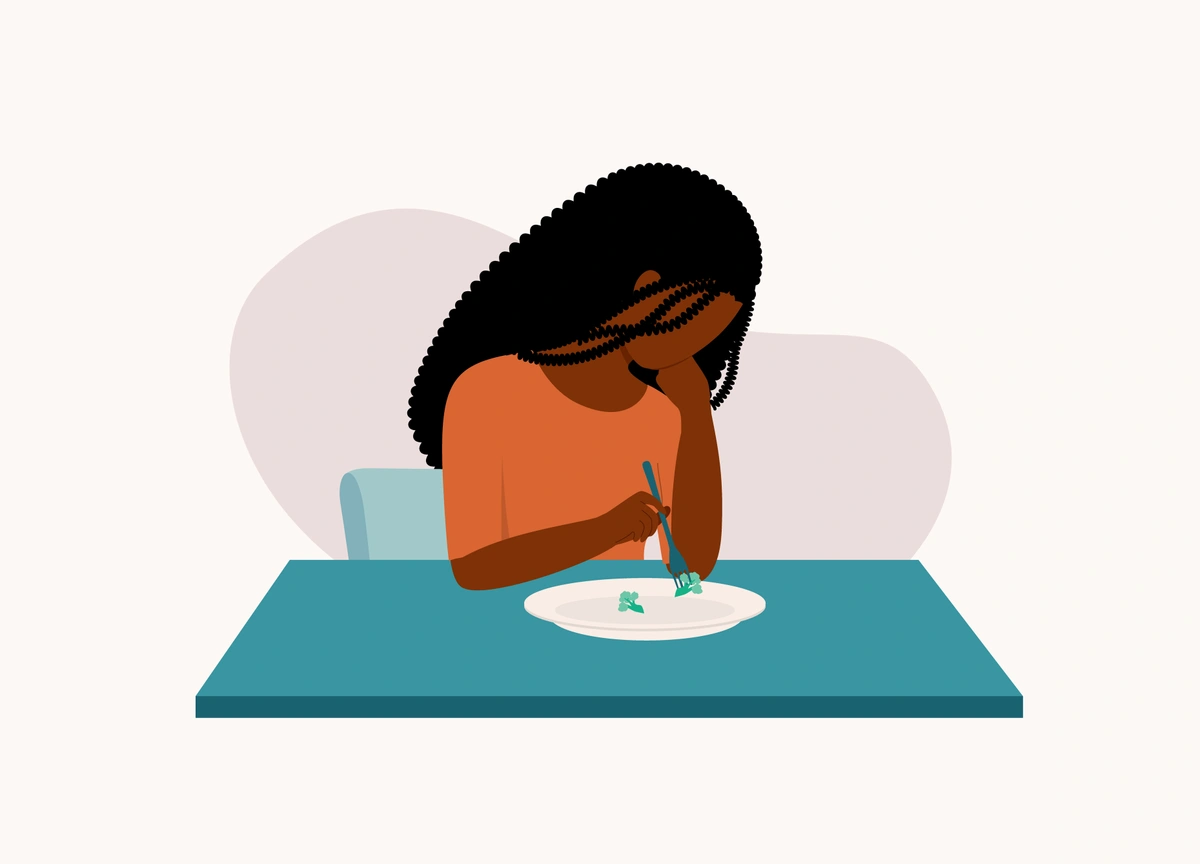Anorexia Nervosa

Anorexia Nervosa
Anorexia nervosa (AN) is an eating disorder characterized by a distorted body image, extreme weight loss, and an obsessive fear of gaining weight. It can cause many very serious medical problems.
There are two types of Anorexia Nervosa
- Binge-Eating/Purging Type involves binge eating and/or purging behaviors during the last three months
- Restricting Type does not involve binge eating or purging
Many have been taught to believe that AN is a temporary disorder mostly in teenage girls wishing to be thinner. Although the problem may have its onset in adolescence, adult women as well as adult men suffer from AN; however, the diagnosis is about twice as common among females. AN is a very dangerous disorder and believed to have the highest death rate of any psychiatric diagnosis. This is why it is so important for the individual with AN to obtain treatment.
As the person with AN loses more and more weight, the desire to lose weight often becomes even more entrenched in the individual. People with AN usually cannot see and do not believe that they are thin now, and that they need to end their fixation on weight loss, for their own health.
For the person with AN, weight loss becomes the prevailing or only concept in their lives and they believe that others are trying to cause harm to them by telling or encouraging them to stop losing weight. People with AN may mistakenly believe that others want them to become obese, and when others press them to eat something, the individual with AN may double down at resisting eating anything.
What it looks like
- Inadequate food intake leading to a significantly low body weight
- Intense fear of weight gain or being “fat,” obsession with weight, or persistent behavior that interferes with weight gain
- Self-esteem overly related to body image
- Inability to appreciate the severity of the situation
- Severity: mild to extreme based on body mass index (BMI)
Individuals with Anorexia Nervosa experience a dramatic weight loss, have a preoccupation with weight, food, calories, fat grams, carbohydrate content, added sugar, and dieting along with refusal to eat certain foods, progressing to restricting against whole categories of food (e.g. carbohydrates).
Individuals with Anorexia Nervosa have frequent comments about feeling “fat” or overweight despite weight loss along with anxiety about gaining weight or being “fat.” And, along with a denial of hunger, development of food rituals occur such as eating foods in certain order, excessive chewing, taking very small bites and rearranging food on one’s plate.
In addition, excuses are made to avoid mealtimes or situations involving food. An excessive, rigid exercise regimen is often present despite weather, fatigue, illness, or injury, with the need to “burn off” calories consumed. There may also be withdrawal from usual friends and activities. In general, behaviors and attitudes indicating that weight loss, dieting, and control of food become primary concerns.
Individuals with Anorexia Nervosa often struggle with depression, anxiety, obsessive compulsive disorder, and ADHD while a small percentage battle with substance use. In addition, a large number of individuals with all types of eating disorders have experienced a form of trauma in their lives.
Who can develop an eating disorder?
A common myth is that eating disorders most affect young Caucasian girls. However, eating disorders do not discriminate among socioeconomic status, race, religion, age or even gender. An individual with an eating disorder could be one's next-door neighbor, one's co-worker, or even one's child. In addition, an elementary school student, adolescent, teen, young adult, middle-aged adult—or perhaps an aging parent.
- Approximately 200,000 individuals in the US struggle with anorexia.
- 1 in 200 women suffers from anorexia.
- Males represent 25% of individuals with AN and BN
- Over 50% of LGBTQ individuals struggle with eating disorders.
- A history of more than one Adverse Childhood Experience (ACE), is associated with a higher risk for eating disorders, substance use disorders, and depression and significantly affect African Americans American Indian/Alaska Native and Hispanic individuals.
What causes eating disorders
Eating disorders can be linked to the cultural environment, genetics, and/or triggers. The cultural environment includes social media, diet trends promoted as “healthy,” and society’s focus on physical appearance vs. inner worth. Family environment can also contribute to eating disorders including high expectations, perfection, lack of structure in the family, split family. Possible genetic components of eating disorders include biologic and innate brain chemistry, along with family history of depression, anxiety, eating disorders and/or substance abuse.
Medical complications
Eating disorders have the highest mortality rate of any mental illness and can affect every cell, tissue, and organ in the body. Eating disorders can result in cardiac arrest, diabetes, chronic renal failure, and neurological damage, along with bowel, breast and reproductive cancers. A total of 20% of individuals with an anorexia diagnosis will die due to medical complications associated with the disorder itself or from suicide.
Outlook
While living with Anorexia Nervosa can present unique obstacles and finding the best treatment can take many attempts, early intervention, along with the proper treatment can dramatically improve one’s quality of life. Treatment for AN often involves a team of professionals working to improve the patient’s relationship with food while simultaneously encouraging them to return to a healthy weight. If medical treatment isn’t contacted soon enough, a person may need immediate intervention to reverse the effects of severe malnutrition. Although living with recurrent Anorexia Nervosa can present unique obstacles and finding the best treatment can take many attempts, with consistent effort and diligence, it is possible for someone who suffered from AN to live a perfectly healthy, normal life.